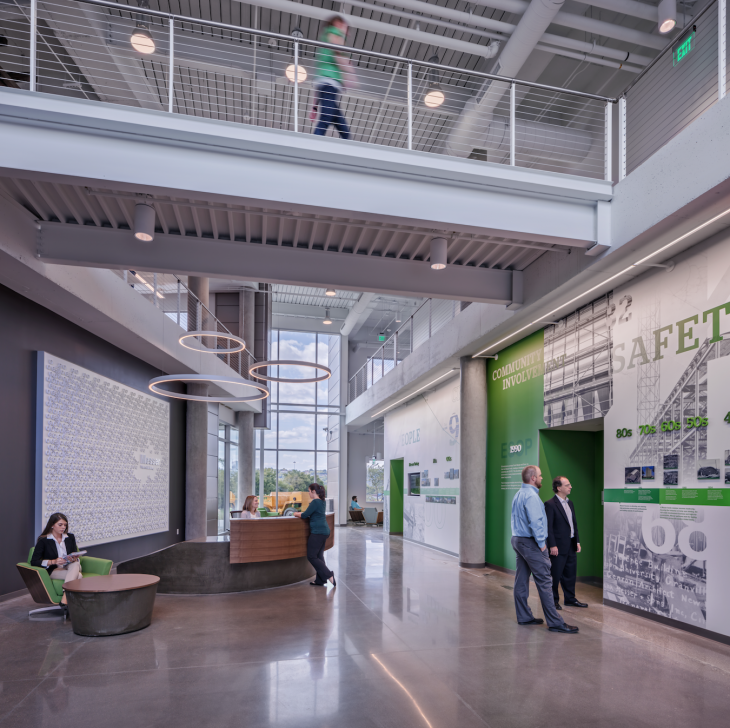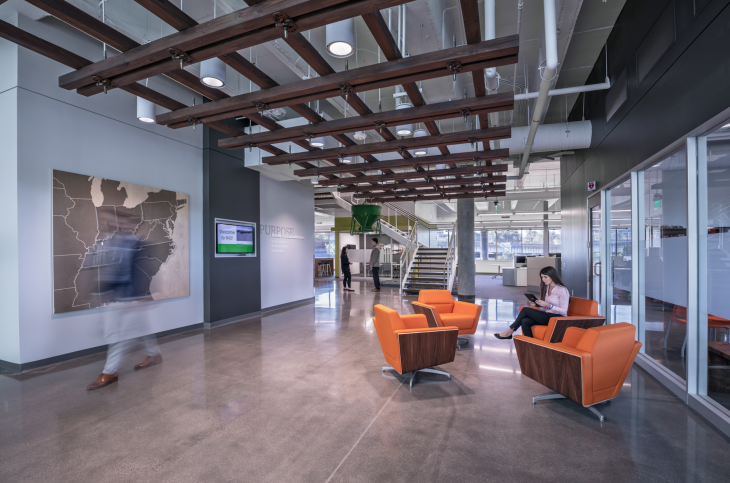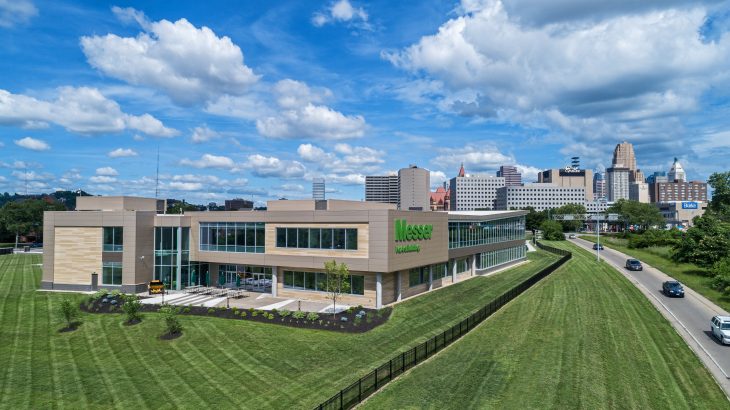Installment 5 of 6: This is the fifth in a bimonthly series of six articles on the growth, value and future of Design for People. The intent is to explore and discover the impact of behaviors, habits and patterns of people in the design of environments. Be sure to check out parts one, two, three and four of this series!

Behavior is not a linear equation
Space is a tool that can be used subtly and successfully to shift the behaviors of individuals, alter the cultures of organizations, and beneficially impact the bottom line. It’s trickle-up economics—the notion that organizational performance is the collective product of individual experiences. That said, people are complex creatures and design must consider a bewildering number of complicated variables. As a result, there is no linear equation for using space to steer behavior. Rather, real estate is but one of the dials leaders can turn to alter the workplace experience.
The theme of this series is to demonstrate the impact that space has on organizational behavior. In the first article, it was posited that the attitudes and actions of the workforce, set within the context of the built environment, provide a compelling source of design inspiration irrespective of external factors. In the second, we identified a number of circumstances that have shifted the way people work and altered the expectations of the workforce. In the third, there was further identification of the macroscopic forces that drive change in the workplace—from emerging technology, to labor markets, to new work processes and the demand for new types of environments. The fourth went deep, drawing on recent advances in behavioral economics, to understand the mechanisms by which people make decisions.
In this, the fifth article, an actual example that demonstrates and reinforces how shifting organizational behavior undergirded the entirety of the design challenge is highlighted.

From drab to dynamic
Messer Construction Co. is an employee-owned commercial construction company that performs work in the communities it serves. Although the company has expanded over 80-plus years to include ten locations across the Midwest and Southeast, Messer calls Cincinnati, Ohio home. Until recently, the company’s corporate functions were housed in an outdated, drab, and somewhat byzantine building, north of the city. Having recently completed projects in the rapidly developing central business district, Messer took three patient years to locate the perfect site for a new facility on a highly visible edge of downtown Cincinnati. On the decision to build at this particular location, CEO and Chairman of the Board Tom Keckeis states, “This is a double down into the city. It’s more centrally located, it has great access and it’s the size we need for what we want to do.” What Messer wanted to do was leverage its deep history in the craft of construction, to make a bold statement about the future workplace.
At the heart, it’s about community
For Messer, the project begins and ends with the community. The building is prominently sited along the I-75 corridor, one of the nation’s vital north-south arteries. States Keckeis on the location of the new building, “This area is redeveloping. We want to be a part of it.” The “it” he is referring to is the rapid redevelopment of areas adjacent to the central business district in downtown Cincinnati. By placing the building in a highly visible location, on the doorstep of the city, Messer claimed a visible place alongside other leading organizations in the city. Said Bethany Smith, Vice President of Marketing and Corporate Communications, “This building– the way that it’s laid out and our 360-degree views of Cincinnati and Northern Kentucky–really connects us to the community as a whole.”
Messer’s commitment to the neighborhood is both real and substantive. Since 1990, the company has invested more than $21 million into its local communities. The company has both a thriving economic inclusion program and a dedication to workforce diversity. It hires locally, and the design features an immersive lobby that tells the Messer story, using a variety of graphic elements. Upon entering the space, a new hire has an immediate understanding of the legacy of the company, its purpose, and its long-standing values. Sonya Walton, Director of Economic Inclusion for Messer, puts it well, “I think a part of our story and our heritage is who we are within the community. We are right in the heart of the community. We are a part of it, and so I think when you come here you see instantly that our company is a community inside this building. We are learning. We are growing with each other. Messer is the fabric of this community.”

Narrative details
The space also features a deeper story. In the center of the lobby sits a massive concrete desk, which was poured in place by the Messer craft force. It is one of the many design elements that explicitly, yet subtly, indicates what Messer does. “One of our goals was to make sure that the building itself spoke to the work we do as contractors,” says Tim Steigerwald, President. “It’s really important because most of the people who work for Messer don’t work under this roof. They are out on job sites, building every day, and we value the building process. We call ourselves builders.” Every design element in the building is an opportunity to illustrate the construction process. As such, the design team made a conscious effort to use features in the space to underscore Messer’s mission. “There is a blend of industrial, concrete, and wood systems that showcase us as builders and not just construction managers,” says Aaron Foulk, Building Systems Executive.”
Behavioral change begets cultural transformation
Companies exist at points along their own evolutionary trajectories. Prior to building the new facility, Messer’s corporate functions were isolated from the city and from each other. Employees worked in small clusters and closed offices, connected by a meandering sequence of hallway passages. Few had access to natural light and almost all were sequestered within their respective job functions. The place lacked any real sense of atmosphere and most certainly did not exude the buzzing community that leadership envisioned. In outlining the goals for the new building, leadership underscored the importance of collaboration amongst disciplines, both within the facility and extending beyond to the field.

The new design features a variety of places for people to come together and collaborate at different scales. Will Johnson, Sales Support Executive, reflects on the change, “I think the culture is really reflected in the fact that we now have all of this space to collaborate. Before, in our old building, we were very siloed. So, now that we have this much space and we have these dedicated areas that are specifically for us to come and collaborate and interact with one another – I feel like it creates a better workflow for a lot of people,” says Johnson. Consider also that Messer’s workforce is not limited to this facility. Instead, the lion’s share of Messer’s workforce is out in the field, staffed on projects for months, even years at a time. Likewise, when tradesmen and contractors come into the home office, they have a completely different set of needs. As such, the headquarters operates as a sort of chapter house, with flexible environments for people to occupy over limited periods of time. Commenting on the relationship between the workers in the field and the support staff in the headquarters, Smith says, “Everybody wants to come here, and we have seen an increase in collaboration between the headquarters and the field as a result.”
Crafting an authentic experience
In the end, Messer succeeded in crafting an authentic workplace experience. The space goes beyond simply communicating who Messer is. It illustrates what Messer does. The response has been dramatic. The Messer team distributed a survey at key points along the project–six months before the move, three months before the move, and six months post-move. The workforce wholeheartedly agrees that the space is efficiently organized, supports collaboration, inspires creativity, and enhances Messer’s ability to deliver world-class services. Reflecting upon the old office space after six months in the new space, similar scores for the prior space plummeted. People simply had to experience the new environment to understand it.


